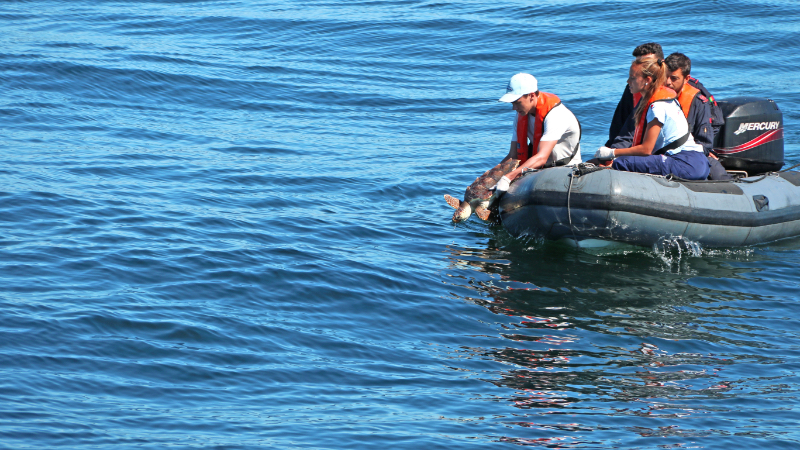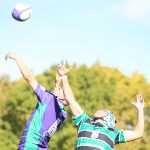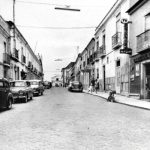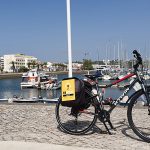By Elio Vicente
It has been a surreal year in which the tides have turned in the world, but we can still enjoy the same reliable and beautiful waters in the Algarve.
The Algarve has been known, for millennia, for its diverse, unique and memorable resources. From sharks to the Conii people, from Romans to the world’s sweetest oranges, from tourists to amazing carob trees, from stunning beaches to the enchanting “Ria Formosa”, literally everyone can find something interesting to eat, drink, see, photograph (and immediately post online) and experience. And a considerable part of its charm and richness comes directly from the sea.
The Conii or Cynetes, (Algarve’s earliest known dwellers), Phoenicians, Carthaginians, Romans, Visigoths and Moors (and everybody else since then) very quickly fell in love with this southern paradise and many aquatic species have been doing the very same thing.
A well sought-after place for sailing and scuba-diving, the Algarve is much more diverse than one could imagine. Every year it surprises even the most experienced researchers associated with the University of the Algarve. The university is recognised as a pioneer and an international reference in marine sciences, conservation and education, which continuously contributes, year after year, to this never-ending endeavour: discover what the oceans still keep hidden from Homo sapiens.
Above and below the surface, at the beach and embedded in rock formations, one can immediately testify to the richness of life in the Algarve. It is summertime when most of the region’s diversity can be more easily enjoyed – and, quite frequently, disturbed, jeopardised and even killed. Endangered species, like the sea-horses, enigmatic and fragile taxa, known for its beauty and unique reproductive strategy – as the males are the ones who get pregnant – swim in our waters.
With hundreds of species of bony and cartilaginous fish to jellyfish – fragile and beautiful but not fish – the Algarve waters are rich with sea life. From tiny seahorses (yes, a fish!) to big whales, razorfish (again, not a fish), to dolphins (mammals, not fish), and from seagulls to starfish (yes, you guessed it: not a fish, either), the Algarve’s ocean is a kaleidoscope of colours, sizes and strategies – of adaptation, feeding and survival.

But such survival is getting more and more challenging. Boats and jet skis noise pollution, plastic bags, nets, PCB and DDT, over-fishing, bycatch and even well-intentioned tourists, but intruding tourists can have a tremendous impact on the welfare and survival of many individuals and even some species.
On a normal summer day, it is quite common to encounter the dolphins and whales that Portuguese waters host, permanently or on migration, 25 different species – including orcas. There are dozens of aquatic bird species and thousands of fish – such as the sunfish which holds the world’s record as the most egg-laying species: 300 million each time. Odd-looking invertebrates (including the beautiful but dangerous Portuguese-man-of-war) and even reptiles, like the common turtle and the green turtle, thrive in the Algarve.
Most of the specimens are a common sight even on winter days, as many of them live all year round in Portuguese waters. But during the summer, with boats and swimmers, with jet skis and scuba divers, and with calmer waters, such encounters can be much easier and enjoyable (enjoyable for humans, anyway).
Sometimes, we can even find such specimens stranded on the beach. On these not-so-rare occasions, urgent help might be required; and, in these situations, the expert hands of rehabilitation professionals (marine biologists, veterinarians, veterinarian nurses) can be the difference between a life (many times, of an endangered species), being saved or lost.
Even when such emergency responses are not successful – not so infrequently, such specimens are too old or too sick or even too fragile to survive the first minutes of its stranding – one can still learn a lot. It is not uncommon to find rarely-seen animals (such as the very long and stunning oarfish – yes, a true fish!), the majestic leatherback sea turtle, and one of the slowest, shyest and totally harmless creatures of the Portuguese sea, the impressive basking shark.
However, these events are not without risks – as sick and even healthy animals, when manipulated by non-experienced hands, can represent a danger for both parties (including zoonoses).
However, living or visiting the Algarve will never be dissociated from the ocean. And if for millennia, the Algarve has been a paradise, the regular sighting of its aquatic inhabitants is, and always will be, one of its most impressive highlights. And as long as we can co-exist with, for example, the giant and gentle basking shark, then we can be certain that the Algarve and its waters are still an extraordinary place to visit, a paradise to admire and protect.
Elio Vicente, a marine biologist at Zoomarine













